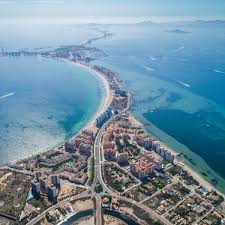Understanding Mar Menor: A Vital Marine Ecosystem in Danger

Introduction
The Mar Menor, a large coastal lagoon located in the southeast of Spain, is not only one of the largest saline lagoons in Europe but also a vital ecosystem that supports diverse marine life and the local economy. Situated next to the Mediterranean Sea, it plays a crucial role in biodiversity, tourism, and fishing. However, the Mar Menor faces significant environmental challenges that threaten its future and the livelihoods that depend on it.
Current Environmental Challenges
In recent years, the Mar Menor has experienced alarming levels of pollution and ecological decline. The lagoon’s waters have been increasingly affected by runoff from agricultural activities, resulting in nutrient overload and eutrophication. This process leads to harmful algal blooms, which severely impact the water quality and endanger marine species.
Recent reports indicate that the lagoon’s water quality has reached critical levels, with oxygen depletion and increased salinity posing serious threats to fish and other marine organisms. The Spanish government’s initiatives, which include measures to regulate agricultural runoff, have faced challenges in implementation, leading to a growing outcry from environmentalists and local communities.
Efforts for Restoration
In response to these pressing issues, various non-governmental organisations and local activists have rallied to demand effective action and sustainable practices. Plans to restore the Mar Menor have been proposed, focusing on reducing agricultural runoff, restoring marshlands, and improving waste management practices. Additionally, community-led initiatives to monitor water quality and educate the public on sustainable practices are gaining traction.
Conclusion
The future of the Mar Menor hangs in the balance as the community, government, and environmental organisations strive to combat pollution and restore its ecological balance. The lagoon is not only important for local biodiversity but also for the economies of the surrounding areas reliant on tourism and fisheries. Continuous efforts to raise awareness and implement effective environmental strategies will be crucial in preserving this unique ecosystem for future generations. The situation serves as a vital reminder of the interconnectedness between human activities and natural environments, showcasing the urgent need for sustainable practices in our interactions with nature.









